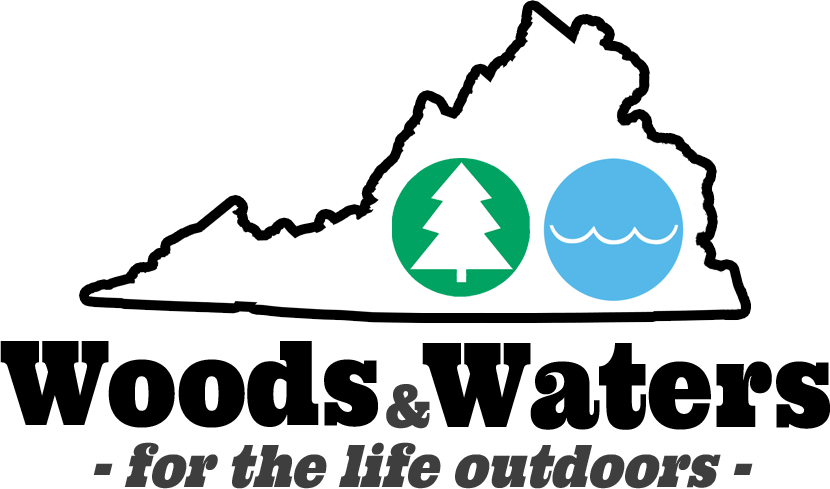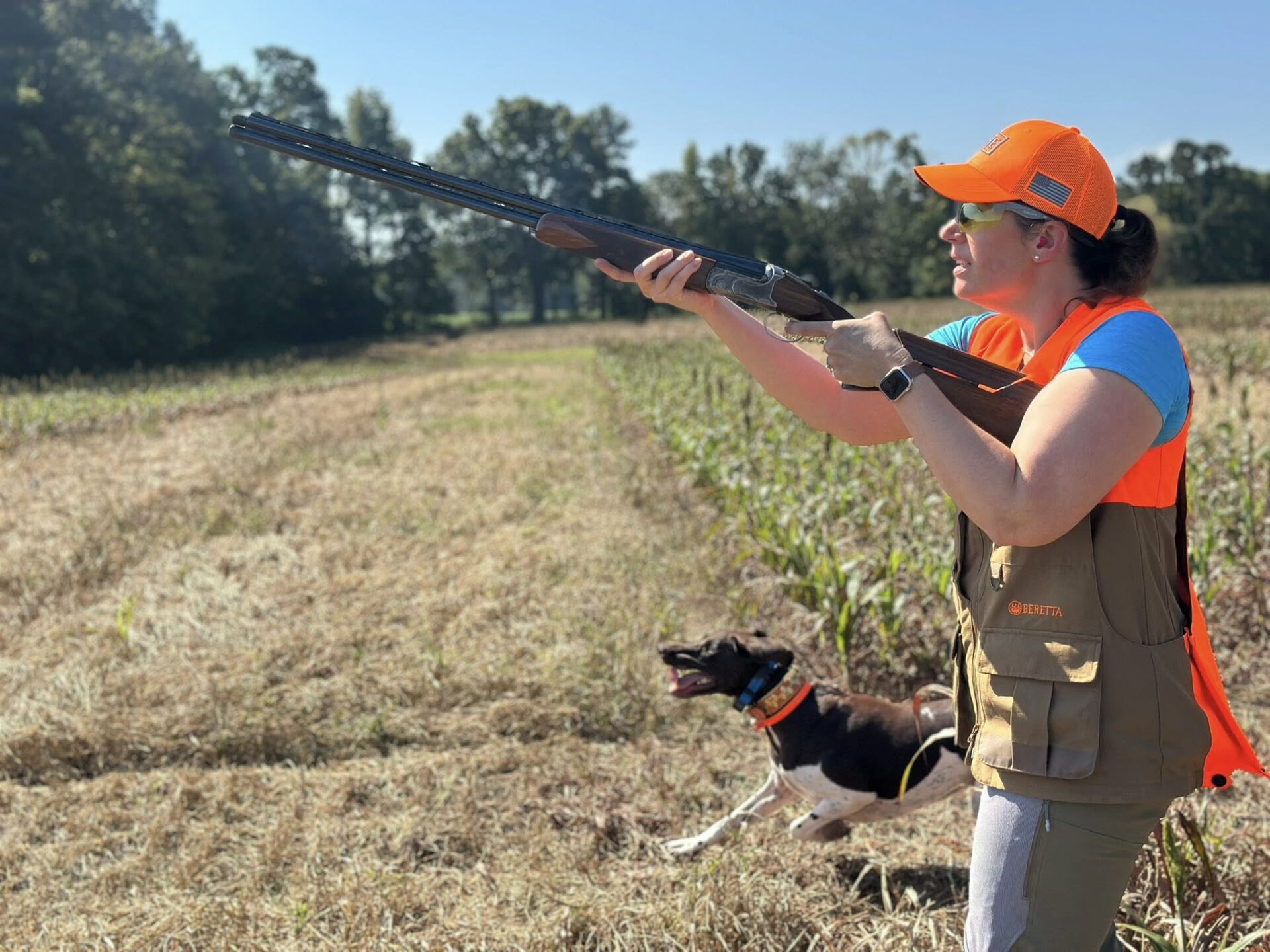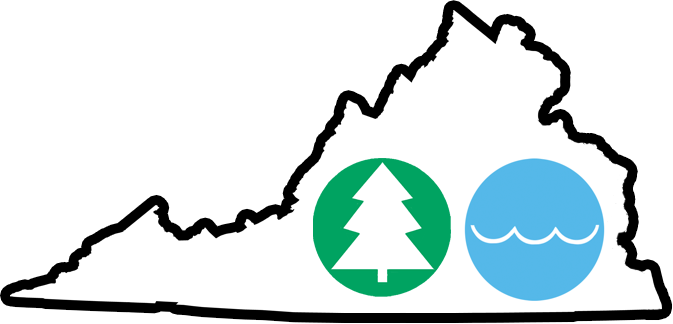The temps are finally becoming bearable, and the skyline is turning into soft yellows and oranges. It’s time! The upland season is kicking into full swing and for many of you, that means packing up the truck and heading west to chase longtails. Mike and I are dumping the kennel and will be heading to NE, MN and SD the second week of October. I’m so excited to finally share the thrill of the flush with my husband on wild birds. This will be his first time out west to hunt.
Students and clients will frequently ask me questions about my trips, but I often feel like they aren’t earnestly scouting their options much less booking their own trips. Why? Well, driving 1,500 miles is daunting in itself. Driving that distance with your bird dog to try your hand on unknown land for truly wild birds is downright scary to some hunters and I totally get it.
One of the biggest roadblocks I hear is that people don’t know where to go to find birds. Newsflash, no one knows exactly where the birds are located; however, those of us that do venture west know how to research and learn where to find the most likely locations for success.
First, research where to find pheasant. Corn fields bordering the hunt property are great but only if the corn is cut. Stay out of the cattails unless you’re going for late season when the ground is frozen and the cattails are knocked down. If you go in during the early season you may not get back out!
Second, download a mapping app. My personal favorite is OnX but there are several out there. I do pay for the upgraded membership but that’s because I hunt several states and want to be able to use the multiple layers including the ones that show private lands that allow public access.
There is no shortage of groups on social media to chat about where people are having better luck getting into birds. Southwest Minnesota is great and so is the “golden triangle” in South Dakota. You have to just jot down a bunch of possibilities and know that you may not be the first person there, so have plenty of backups. Iowa is on track to offer some of the best pheasant hunting it’s ever experienced and I will more than likely dip down to take a sample this trip.
My best suggestion is if you are going alone or with just one or two buddies, stick to the smaller properties. Don’t try to attack a whole section (640 acres). You need to have enough guns in the hunt to set up blockers on the back of the property, or the birds will simply run ahead of you and flush out at 60+ yards. My favorite spots are usually less than 50 acres, surrounded by cut corn fields and either an irrigation ditch or creek nearby. One of my best spots is only 12 acres and has all these attributes, and I have consistently taken my limit on this one property. Typically, most hunters drive past thinking it’s too small to bother with and there aren’t going to be any birds. Oh, how wrong they are in this thinking!
You don’t really need a ton of stuff for you. Just pack some gear for cold, warm and rainy weather. It’s the dog that needs the most stuff. GPS collars and a first aid kit are mandatory. Make sure you take plenty of dog food and know where the closest vet is always located. If you’re hunting the sandhills, your pup will need booties to deal with the burrs.
I pretty much only use Airbnbs when I travel so I can have a washer/dryer available. This allows me to pack less clothes since I’m typically gone for almost three weeks. It also lets me cook my own meals and gives the pups and I a cozy spot to unwind and relax.
Not sure about the drive? Consider flying in and using an outfitter for the first time and take an extra day to drive around in your rental car to scout for next year. I do this when I go out every June and August so I know exactly where I can drive in with the dog trailer.
Once you try it, you’ll never look back and al- ways wonder why you didn’t do it sooner! No matter how you decide to chase feathers, be sure to share it with a friend or family member and keep building those memories.
he temps are finally becoming bearable, and the skyline is turning into soft yellows and oranges. It’s time! The upland season is kicking into full swing and for many of you, that means packing up the truck and heading west to chase longtails. Mike and I are dumping the kennel and will be heading to NE, MN and SD the second week of October. I’m so excited to finally share the thrill of the flush with my husband on wild birds. This will be his first time out west to hunt.
Students and clients will frequently ask me questions about my trips, but I often feel like they aren’t earnestly scouting their options much less booking their own trips. Why? Well, driving 1,500 miles is daunting in itself. Driving that distance with your bird dog to try your hand on unknown land for truly wild birds is downright scary to some hunters and I totally get it.
One of the biggest roadblocks I hear is that people don’t know where to go to find birds. Newsflash, no one knows exactly where the birds are located; however, those of us that do venture west know how to research and learn where to find the most likely locations for success.
First, research where to find pheasant. Corn fields bordering the hunt property are great but only if the corn is cut. Stay out of the cattails unless you’re going for late season when the ground is frozen and the cattails are knocked down. If you go in during the early season you may not get back out!
Second, download a mapping app. My personal favorite is OnX but there are several out there. I do pay for the upgraded membership but that’s because I hunt several states and want to be able to use the multiple layers including the ones that show private lands that allow public access.
There is no shortage of groups on social media to chat about where people are having better luck getting into birds. Southwest Minnesota is great and so is the “golden triangle” in South Dakota. You have to just jot down a bunch of possibilities and know that you may not be the first person there, so have plenty of backups. Iowa is on track to offer some of the best pheasant hunting it’s ever experienced and I will more than likely dip down to take a sample this trip.
My best suggestion is if you are going alone or with just one or two buddies, stick to the smaller properties. Don’t try to attack a whole section (640 acres). You need to have enough guns in the hunt to set up blockers on the back of the property, or the birds will simply run ahead of you and flush out at 60+ yards. My favorite spots are usually less than 50 acres, surrounded by cut corn fields and either an irrigation ditch or creek nearby. One of my best spots is only 12 acres and has all these attributes, and I have consistently taken my limit on this one property. Typically, most hunters drive past thinking it’s too small to bother with and there aren’t going to be any birds. Oh, how wrong they are in this thinking!
You don’t really need a ton of stuff for you. Just pack some gear for cold, warm and rainy weather. It’s the dog that needs the most stuff. GPS collars and a first aid kit are mandatory. Make sure you take plenty of dog food and know where the closest vet is always located. If you’re hunting the sandhills, your pup will need booties to deal with the burrs.
I pretty much only use Airbnbs when I travel so I can have a washer/dryer available. This allows me to pack less clothes since I’m typically gone for almost three weeks. It also lets me cook my own meals and gives the pups and I a cozy spot to unwind and relax.
Not sure about the drive? Consider flying in and using an outfitter for the first time and take an extra day to drive around in your rental car to scout for next year. I do this when I go out every June and August so I know exactly where I can drive in with the dog trailer.
Once you try it, you’ll never look back and al- ways wonder why you didn’t do it sooner! No matter how you decide to chase feathers, be sure to share it with a friend or family member and keep building those memories.
Kate Ahnstrom, owner of Virginia Shooting Sports is a certified, professional instructor of the Paragon School of Sporting, pro staff Syren/Caesar Guerini, Artemis ambassador for Virginia and field staff member of the Sisterhood of the Outdoors. Her tireless dedication to her students’ success is obvious in each and every lesson.



